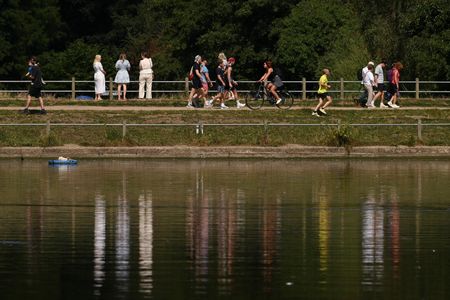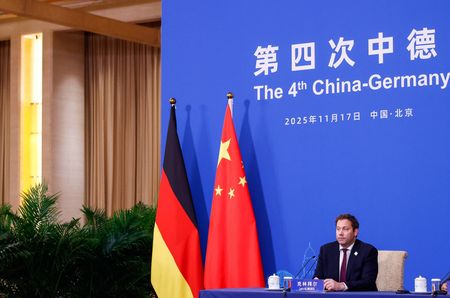FRANKFURT (Reuters) -Germany is putting natural gas import terminals into operation as part of the country’s efforts to replace piped Russian gas following Moscow’s invasion of Ukraine in 2022.
The Elbe River terminal at Stade is now in line to become operational in the second quarter of 2026 at the earliest, according to state-appointed terminal company DET.
It will be the fifth floating storage regasification unit (FSRU) to receive seaborne LNG, which official data shows represented 11% of all German gas imports over the first three quarters of 2025.
Here are details of developments at the sites:
MUKRAN
The terminal on Ruegen island in the Baltic Sea, operated by private firm Deutsche ReGas, supplies onshore grids with LNG from pipeline firm Gascade’s link OAL in cooperation with Norway’s Hoegh Evi’s FSRU Neptune.
It wants to restart a second FSRU eventually and restore full capacity of 13.5 billion cubic metres by 2027.
In long-term arrangements, ReGas has launched a bidding round to expand Mukran’s capacity by offering an additional 5 bcm per year from 2027 to 2043.
In September, it said it signed long-term agreements with chemicals producer BASF and Norwegian incumbent Equinor for non-specified regas capacity.
S&P Global Platts in September added Mukran as a discharge port in its delivered ex-ship (DES) Northwest Europe LNG benchmark prices assessment.
LUBMIN
ReGas and Hoegh plan to develop the Baltic Sea port, a forerunner of Mukran, into a green ammonia and hydrogen production and import terminal, which Gascade will link up with customers once it goes ahead.
WILHELMSHAVEN
Utility Uniper launched Germany’s first FSRU operation, Wilhelmshaven 1, on the North Sea, in 2022.
Uniper plans to add a land-based ammonia import reception terminal and cracker in the second half of this decade to make green hydrogen, and build a 200 MW electrolyser to be fed with local wind power.
DET officially started commercial operations at Wilhelmshaven 2 on August 29 via the Excelerate Energy-operated FSRU Excelsior, after preparatory and testing activities since May. Maintenance also took place in October.
All available regasification slots in 2025 and 2026 were placed with gas market players in July.
STADE
DET said on November 14 that it had agreed with private company Hanseatic Energy Hub (HEH) to take on the job of erecting an FSRU superstructure at the Elbe River-based inland port.
DET said it would start with inspection, planning and execution of the job immediately but added that the terminal would not be ready to go into operation before the second quarter of 2026.
The designated FSRU, Energos Force, would return to the site in time, where Uniper and sector peer EnBW will be the main customers.
Prior to the latest developments, DET and HEH had temporarily cancelled contracts with each other over unresolved disputes over construction schedules and payments.
HEH plans to start a shore-based terminal for LNG, bio-LNG and synthetic natural gas at Stade in 2027.
BRUNSBUETTEL
The Brunsbuettel FSRU – the Hoegh Gannet – was removed temporarily for two months in September for upgrades ahead of winter, according to DET.
It went into operation in 2023 on the North Sea coast, initially chartered by the trading arm of utility RWE before being handed over to DET.
It is the forerunner of a land-based LNG facility, cleared to receive 40 million euros of state support.
This could start operations at the end of 2026, when a newly inaugurated, adjacent ammonia terminal could also start up.
(Reporting by Vera Eckert; Editing by Joe Bavier)










